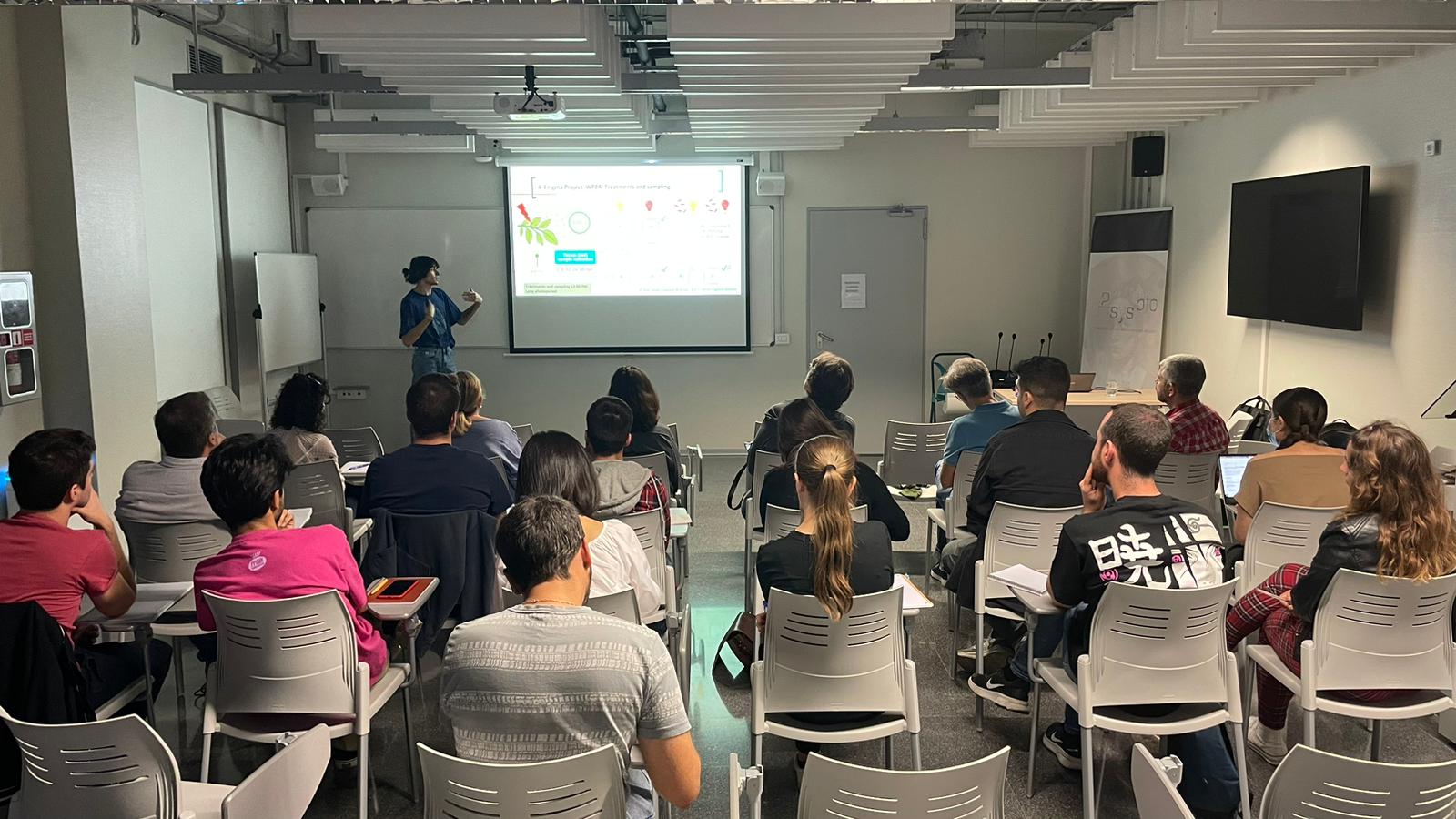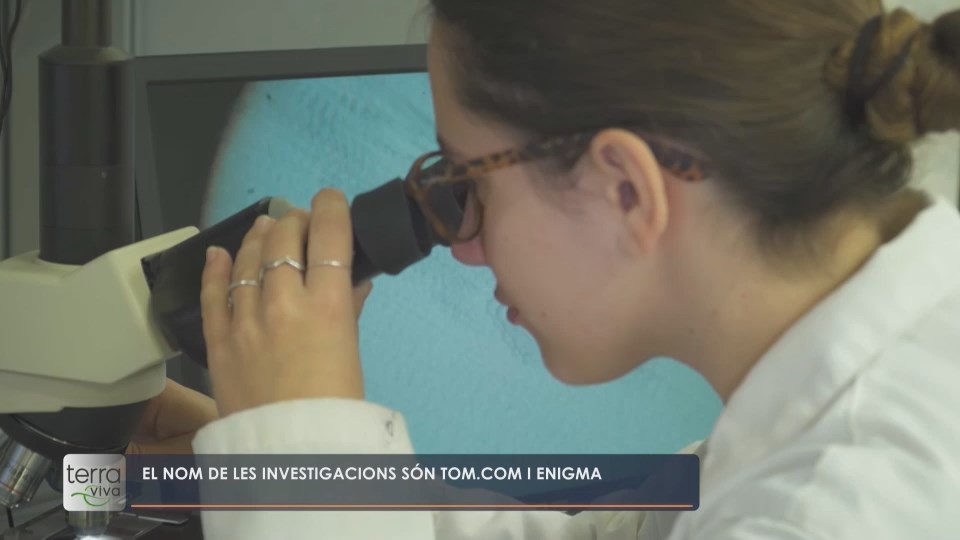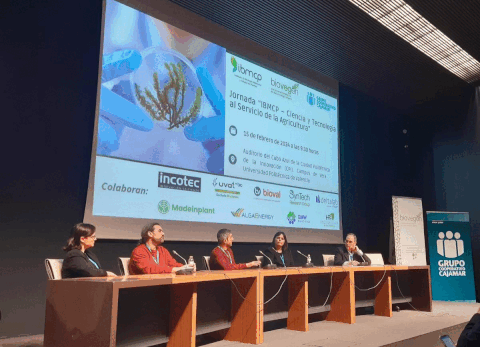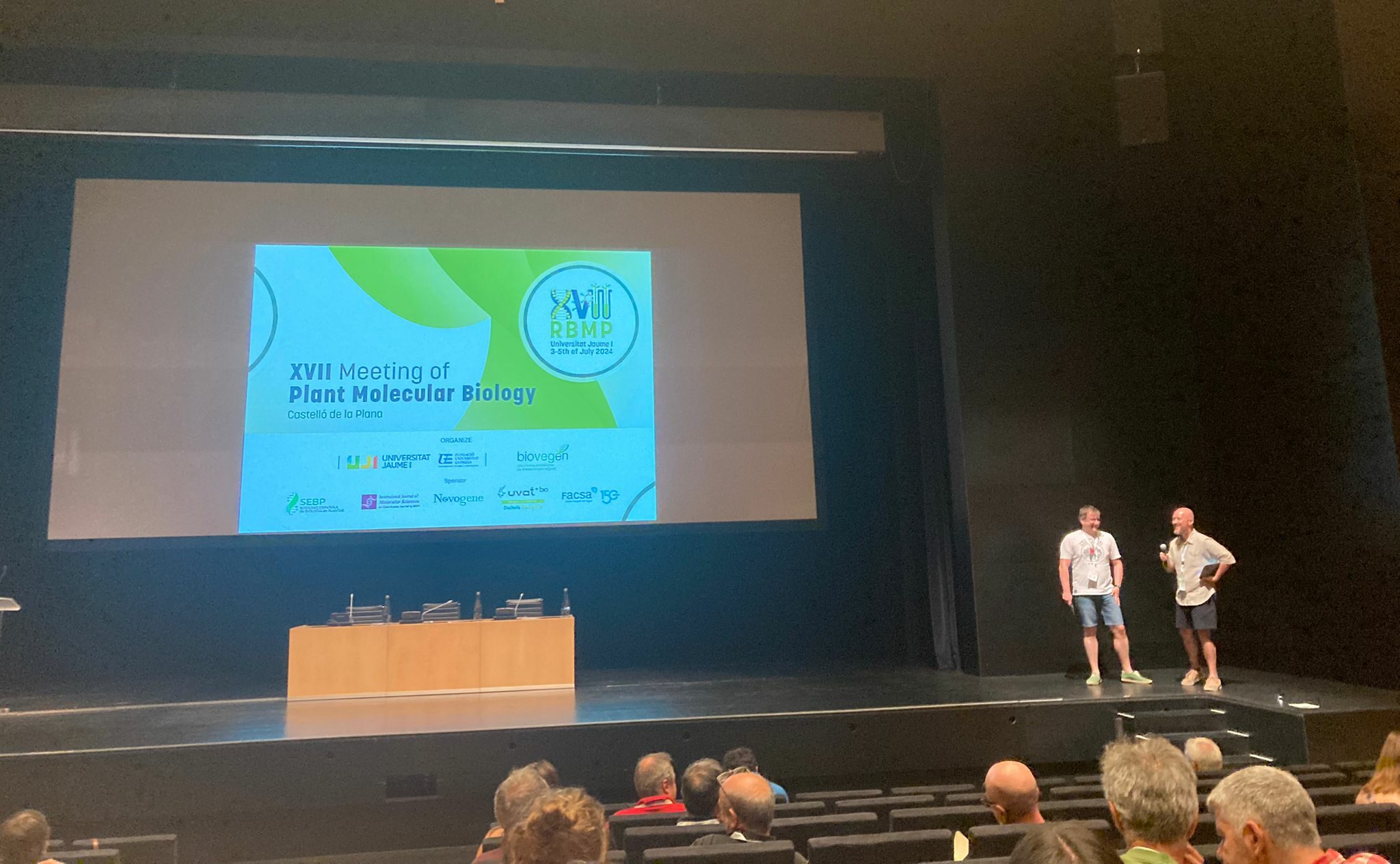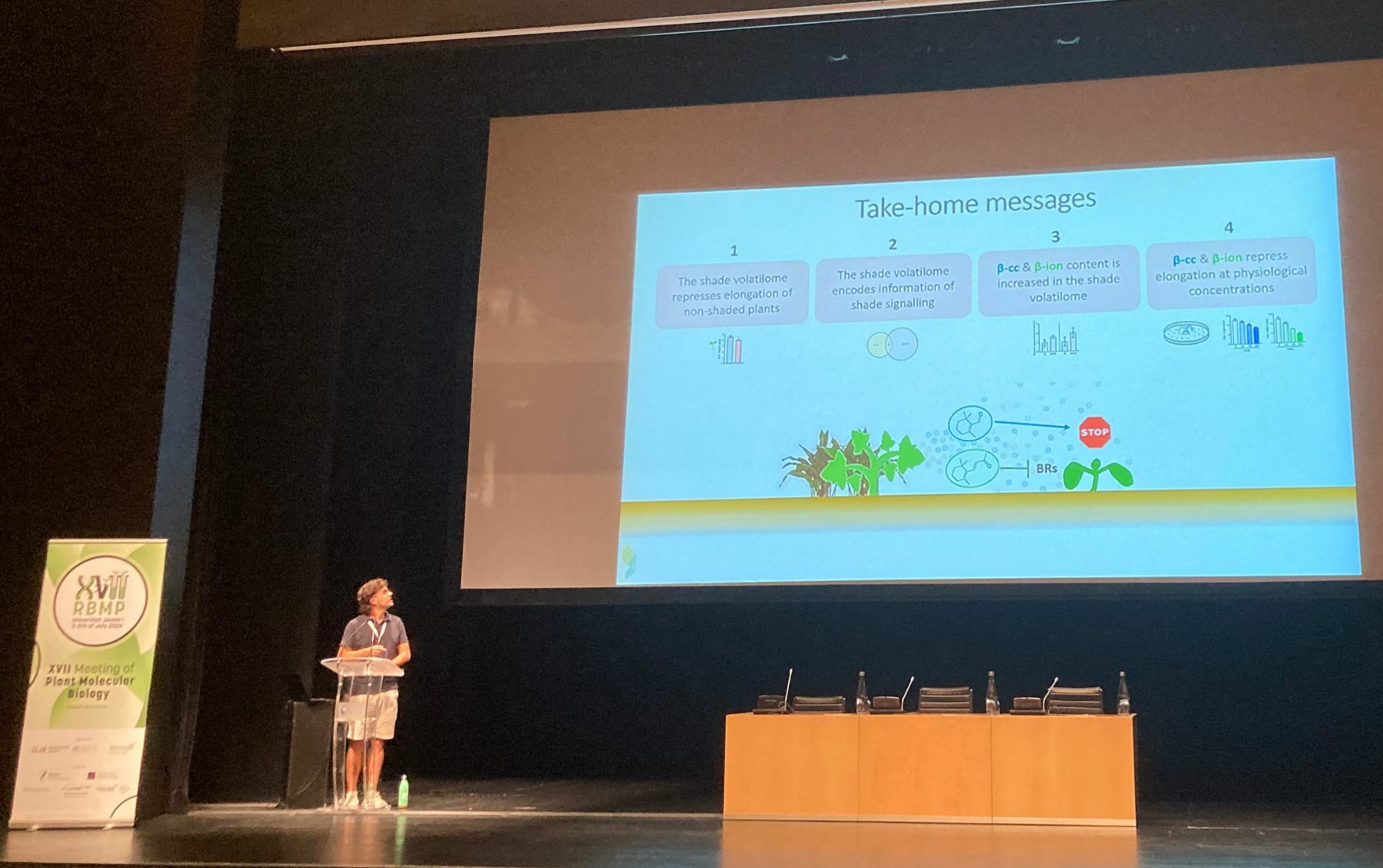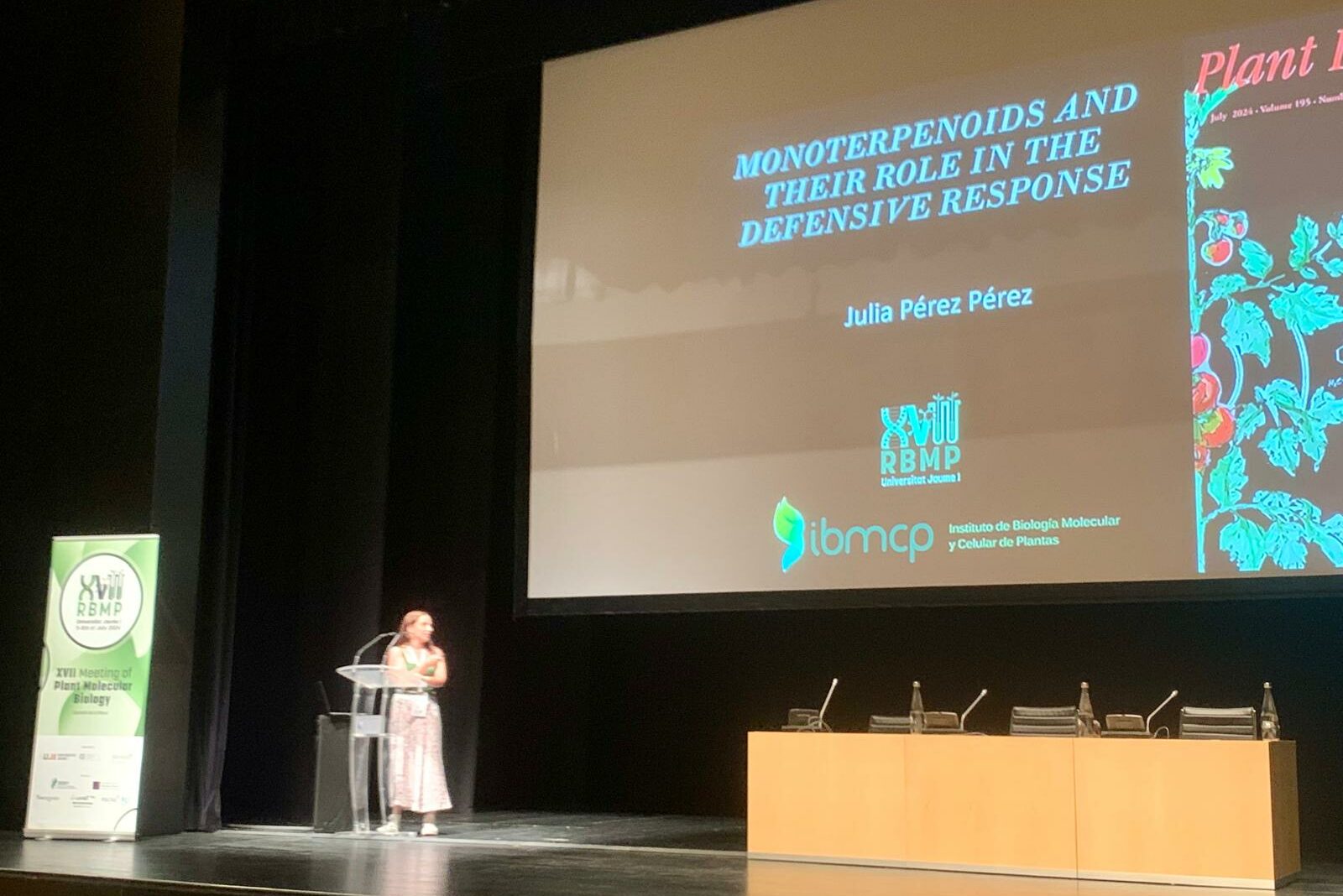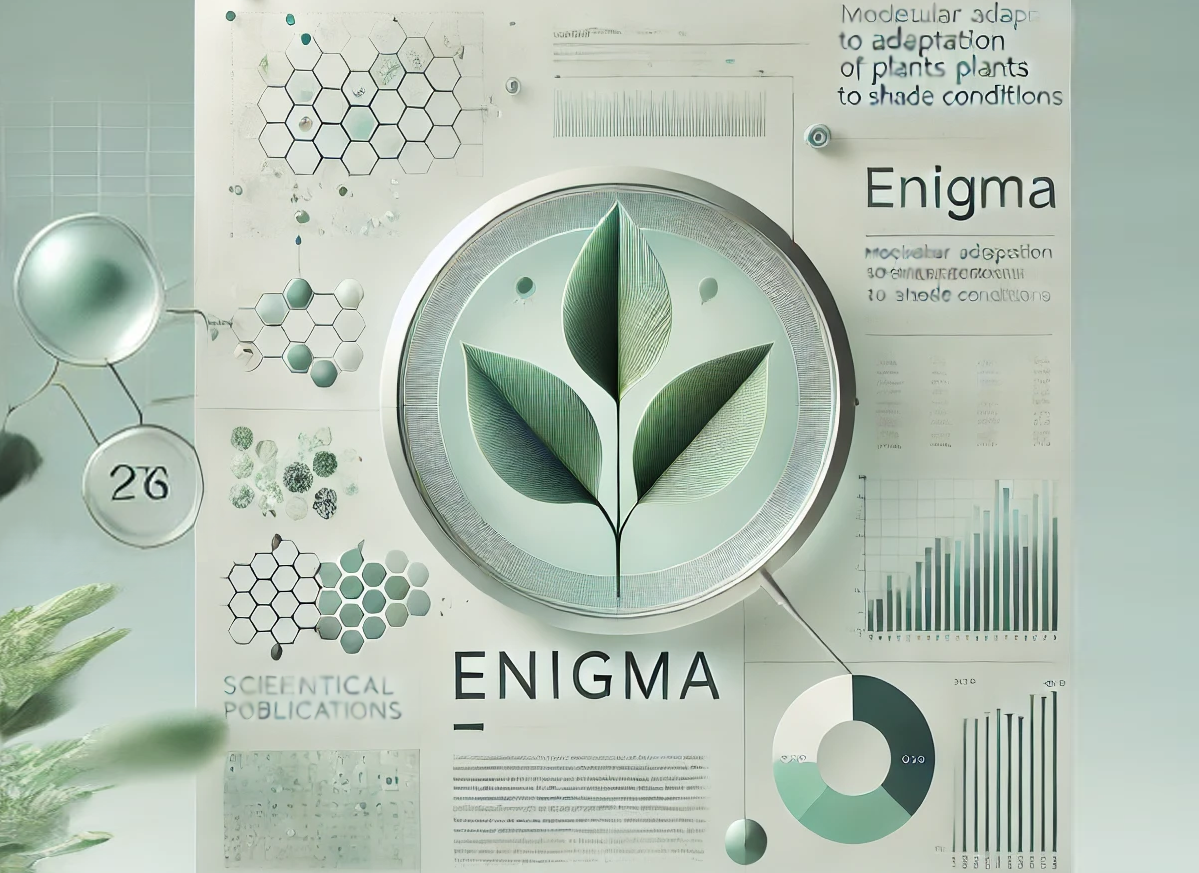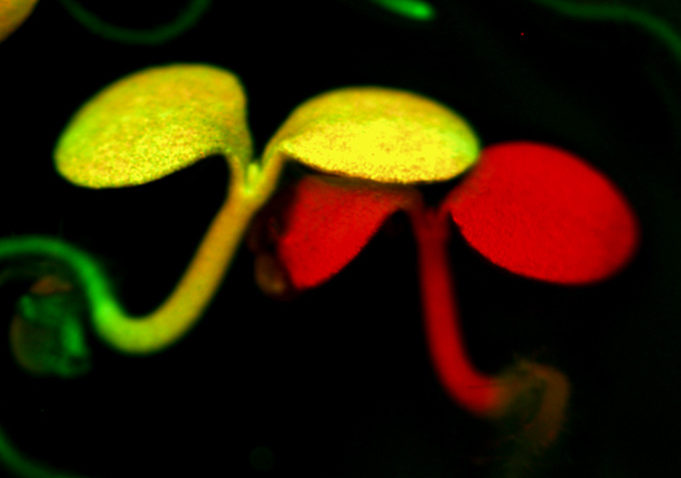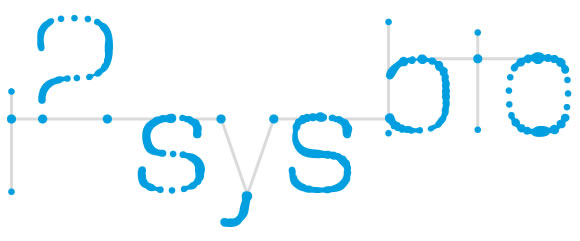OUR WORK
OUR PEOPLE
OUR OUTCOMES
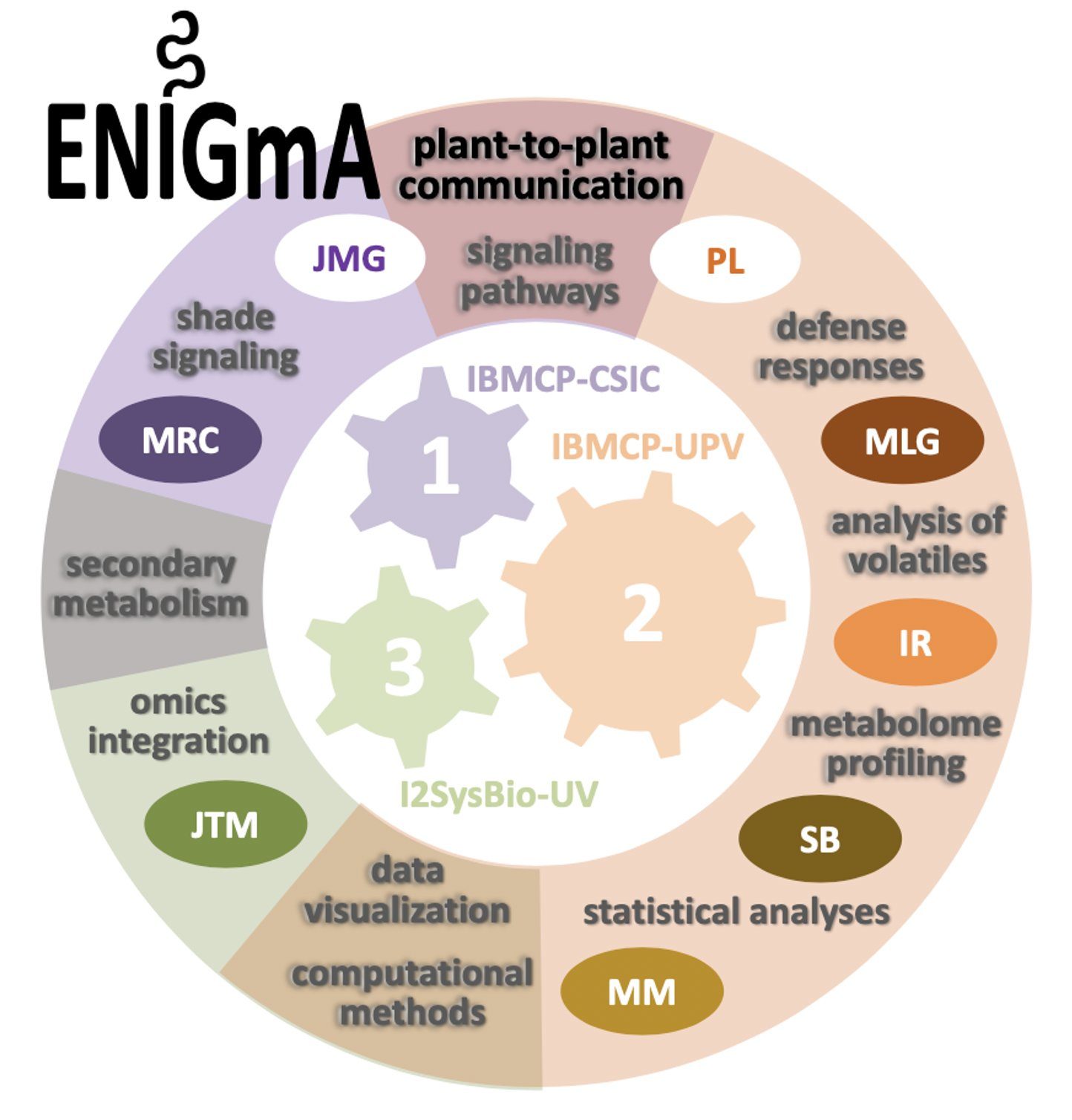
What is ENIGmA?
Plants usually live in groups of the same or different species, and communicate with each other by emitting and perceiving Volatile Organic Compounds (VOCs), constituting a complex alphabet that allows them to be aware of different environmental stimuli, such as the proximity of other plants or a pathogen threat.
Thus, plants use an intricate array of air-borne VOC signals to fine-tune development, fitness and/or resilience capacities according to the environmental situation of their neighbourhood. It is our goal to help decypher this complex
network and learn the specific responses of this VOC-based language in plants.
What we are doing
We are focusing on plants as receivers of information to learn how they decrypt vegetation proximity (shade) and pathogen attack signals encrypted by emitter plants as VOC cues, and transduce them into specific acclimation responses.
To do so, we are studying:
VOCs released by challenged emitter plants
By means of a non-targeted GC-MS analysis, we will investigate the volatilome produced by the different emitter species (tomato, A. thaliana and C. hirsuta) when exposed to shade and/or bacterial infection. These analyses will provide novel evidence on whether combination of environmental signals is encrypted by emitter plants as the sum of the individual VOC profiles or as a novel VOC bouquet.
Changes in gene expression in receiver plants after exposure to VOCs from emitter plants
RNA–seq analyses of receiver tomato and A. thaliana seedlings will help identify general responses to emitted VOCs. The transcription factors being activated in these responses will be further selected for genome-wide binding assays to associate transcriptional networks to the plant-to-plant communication signals. Based on this analysis, we expect to unveil unanticipated responses of receiver plants to specific VOC mixtures.
Acclimation and other physiological responses triggered by VOCs on receiver plants
By analyzing acclimation responses to shade or bacterial infection, but also others deduced from the transcriptomic profiles of non-challenged receiver plants exposed to VOCs, we expect to confirm the biological relevance of this plant-to-plant communication system.
Molecular mechanisms governing integration of VOC signals in receiver plants
By using forward and reverse genetic strategies, we aim to get insights into the molecular components that regulate VOC sensing and signal transduction in the receiver plants.
WORKING PLAN:
WP1.- Set up the experimental conditions
WP2.- Identify the VOCs released by challenged emitter plants
WP3.- Analyze the changes in gene expression in receiver plants
WP4.- Investigate acclimation and other physiological responses
WP5.- Unveil molecular mechanisms governing integration
WP6.- Communicate and disseminate our results
The Team
Communication of our results
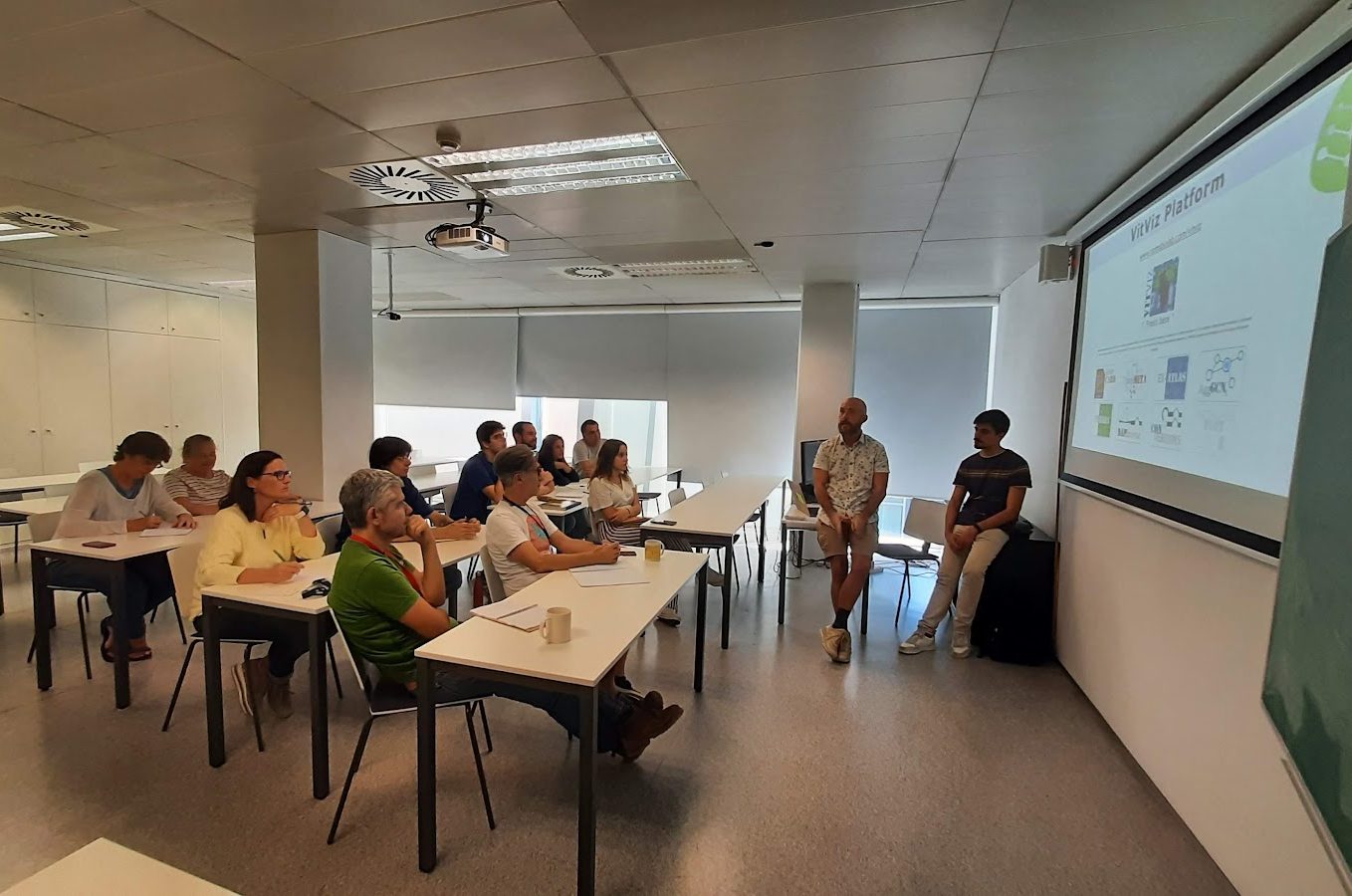
On the first Thursday of each month we have constructive meetings in a friendly working atmosphere at the IBMCP.
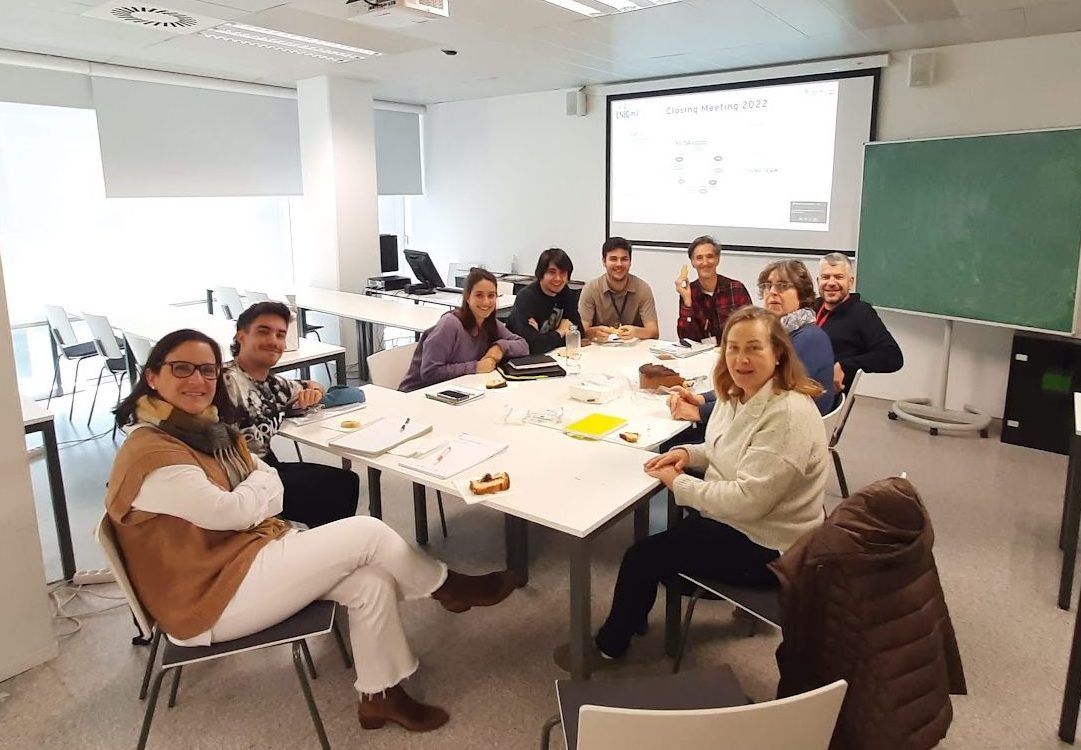
On December 15, 2022 we had our Closing Meeting 2022. Many exciting experiments were proposed for 2023!
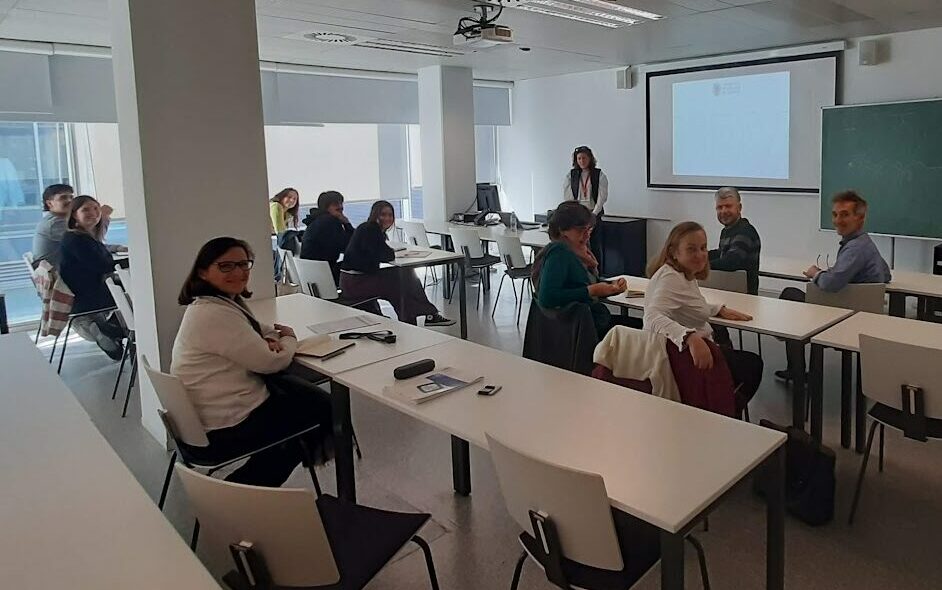
Our Closing Meeting 2023, and a bunch of New Year’s resolutions for 2024!

On April 29, 2024, Jaume Martínez gave an informative talk at the IES Jaume I in Borriana (Castelló) about Plant Research and the ENIGmA project.
Contact us
Please let us know what you think. We’ll be pleased to hear from you!










